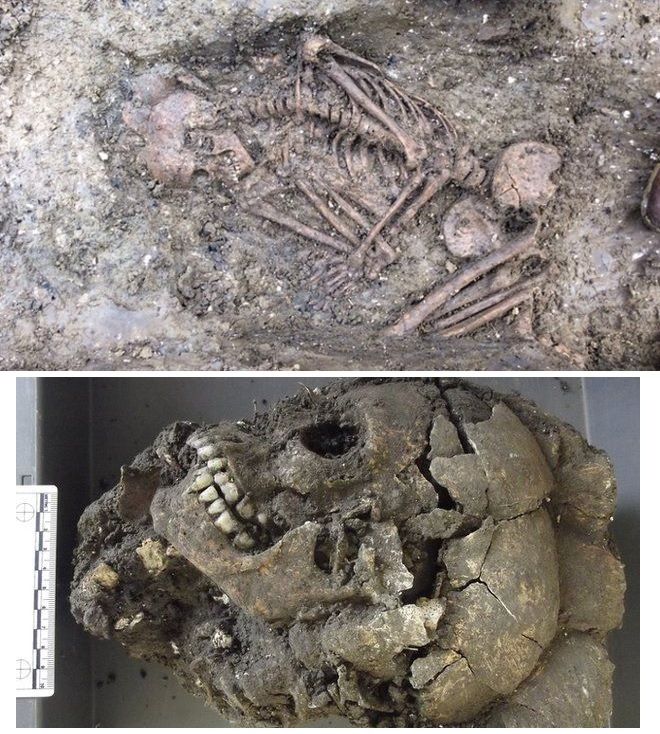Post by UKarchaeology on Sept 25, 2015 0:55:24 GMT

A 4,000-year-old Bronze Age skeleton, believed to be that of a child, has been unearthed by archaeologists at a dig in Wiltshire.
The team from the University of Reading made the discovery while excavating Wilsford henge in the Vale of Pewsey.
The body was found lying in a foetal position and wearing an amber necklace.
Reading University archaeologist Dr Jim Leary described the skeleton as a "wonderful discovery".
He said: "Scientific analysis will provide information on the gender of the child, diet, pathologies and date of burial.
"It may also shed light on where this young individual had lived."
The three-year Vale of Pewsey dig is a partnership between the University of Reading, Historic England, the Arts and Humanities Research Council and Wiltshire Museum.
The aim is to gain a better understanding of the people who lived in the areas surrounding Stonehenge.
Findings to date include flint arrowheads and blades, decorated pottery, shale and copper bracelets and a Roman brooch.
During the last six weeks the team has focused on Marden henge and Wilsford henge.
Dr Leary said: "Finds from the first five weeks of the dig were exciting - but as so often during excavations the best is revealed last."
Built in 2,400 BC, Marden henge is the largest prehistoric monument of its kind in the country.
Duncan Wilson, of Historic England, said: "Bigger than Avebury, 10 times the size of Stonehenge and halfway between the Stonehenge and Avebury World Heritage Sites, comparatively little is known about this fascinating and ancient landscape.
"The work will help Historic England focus on identifying sites for protection and improved management, as well as adding a new dimension to our understanding of this important archaeological environment."
(pics/source at: www.bbc.co.uk/news/uk-england-wiltshire-33643447 )
